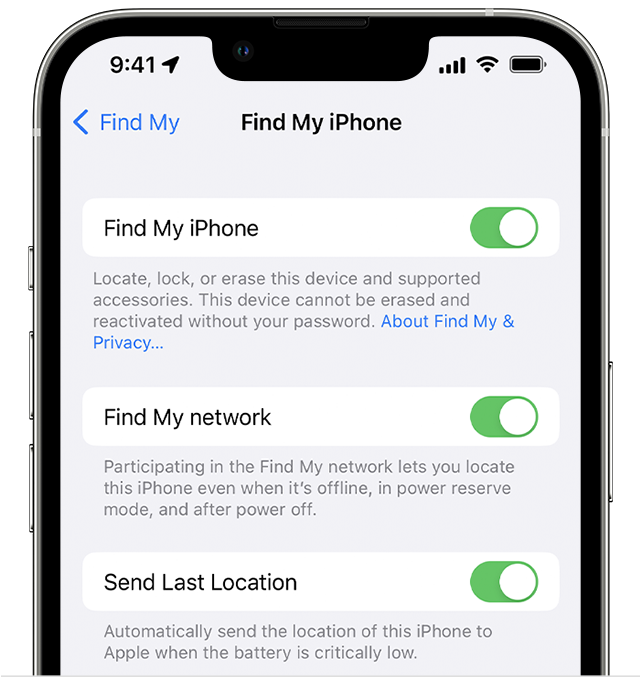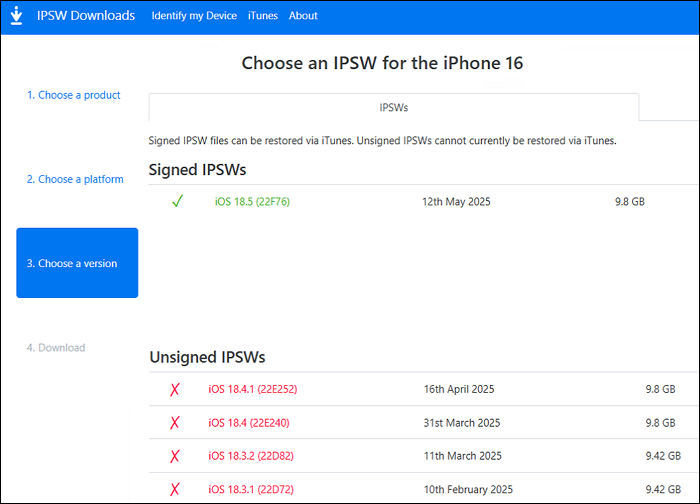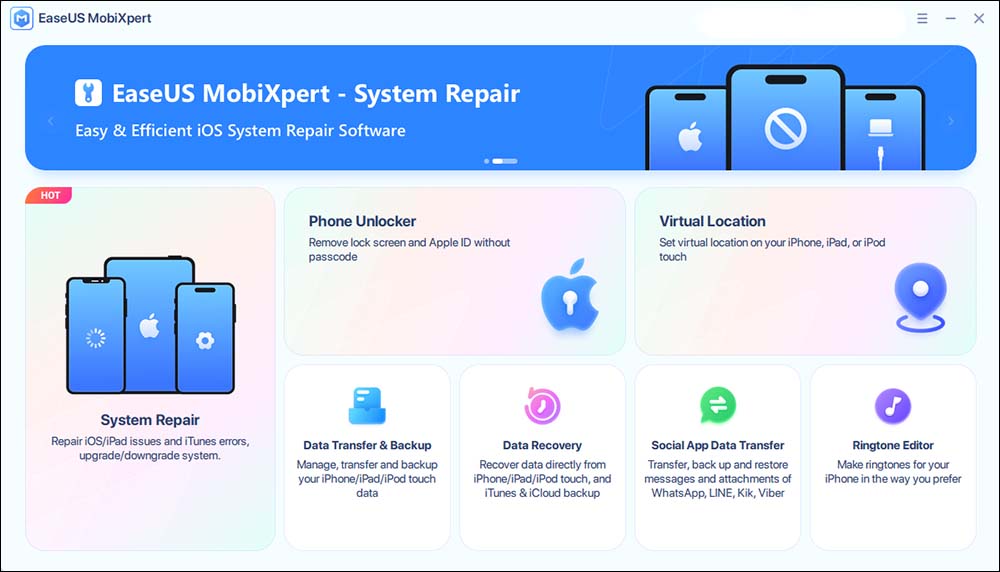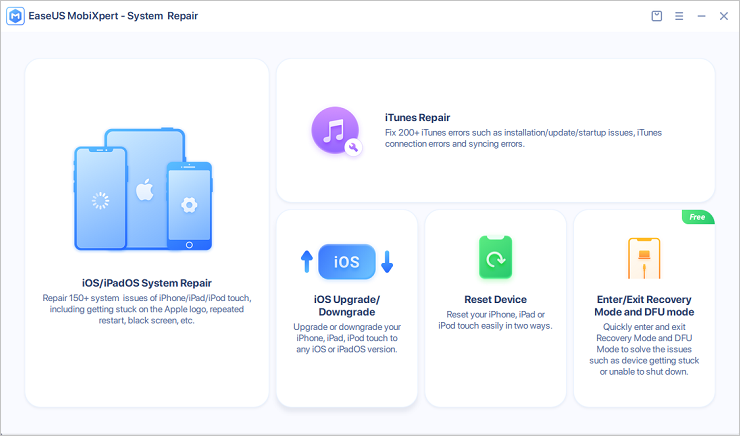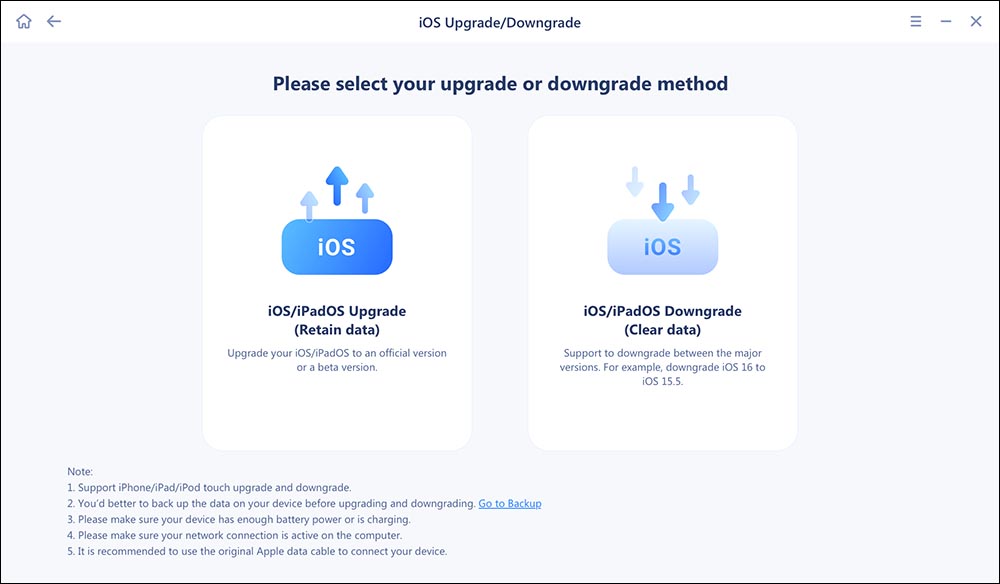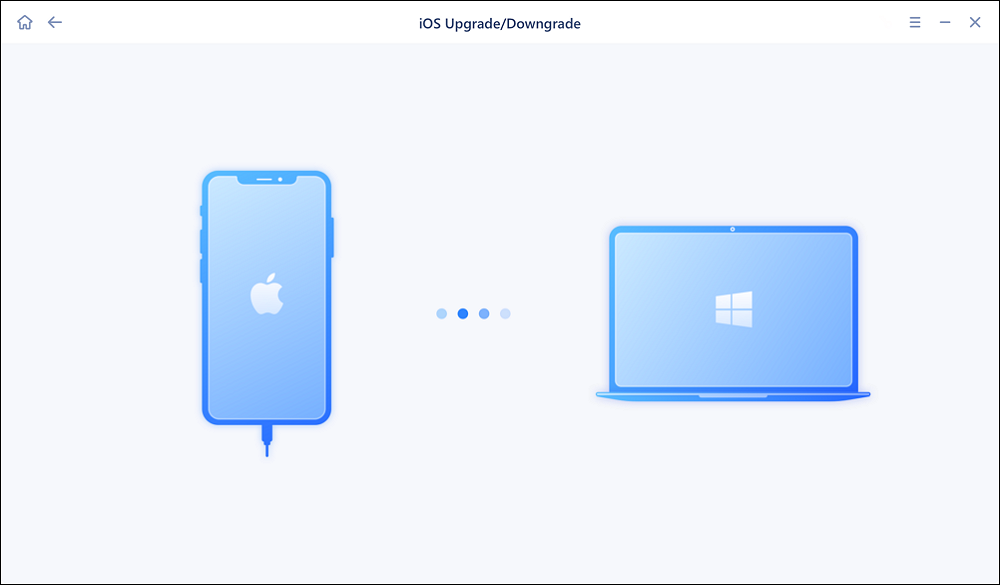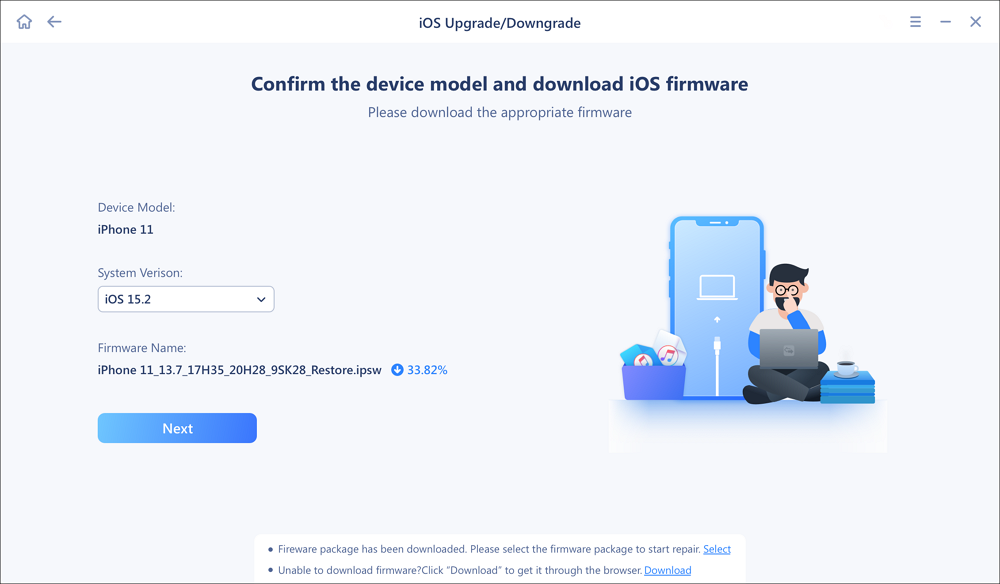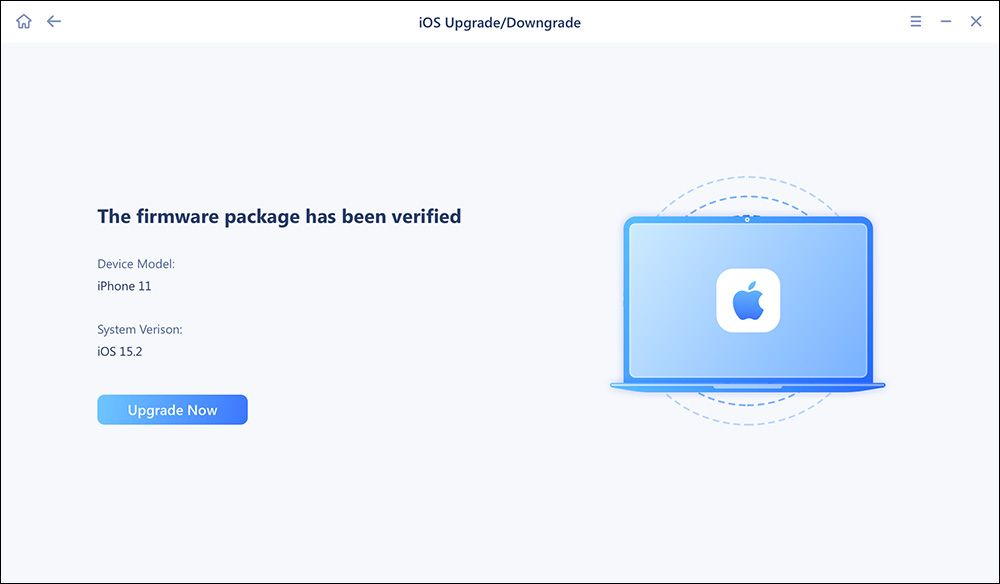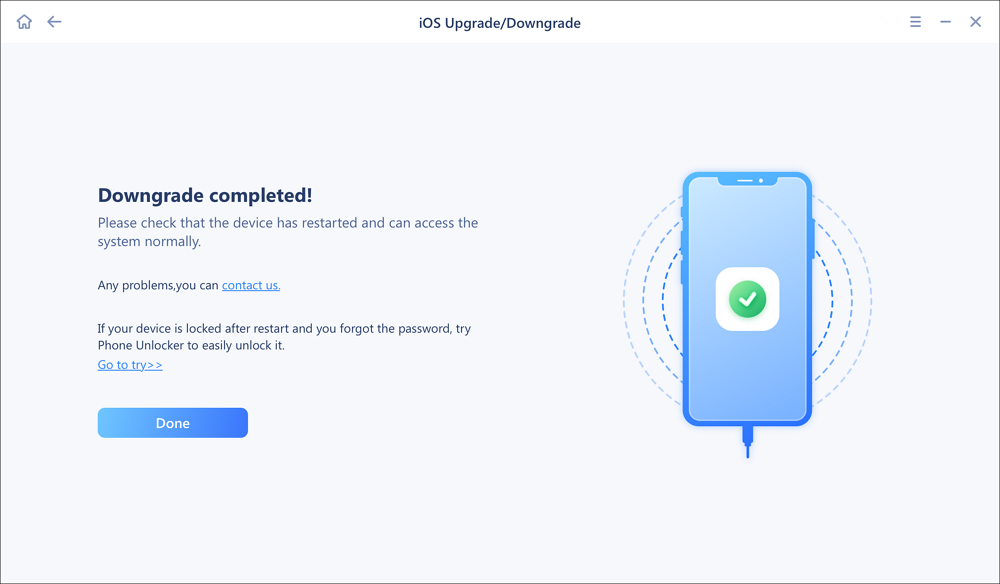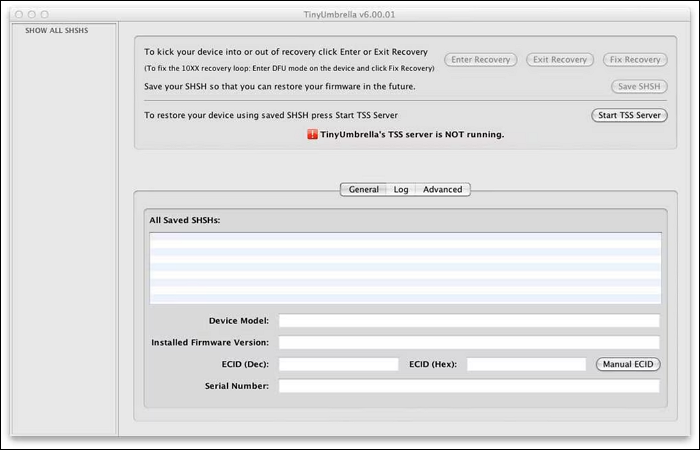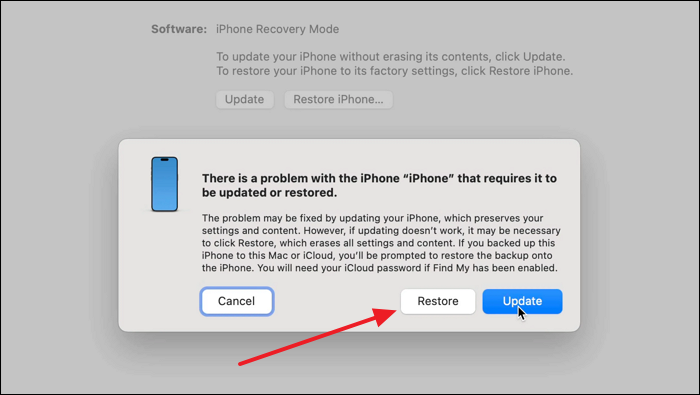| Method |
Computer? |
Third-party tools? |
Jailbreak needed? |
Notes |
| EaseUS MobiXpert |
Yes |
Yes |
No |
Simplifies downgrade, no jailbreak needed |
| iPhone Settings |
No |
No |
No |
Only stops beta updates, no downgrade |
| TinyUmbrella |
Yes |
Yes |
Yes |
Jailbreak required, less user-friendly |
| Finder |
Yes |
No |
No |
Official Apple method |
If you have upgraded to iOS 26 but want to go back to iOS 18 without the hassle of using iTunes, this is the right place that perfectly fits your needs. While Apple's official downgrade process typically requires iTunes or Finder on a computer, there are now several alternative methods to downgrade from iOS 26 to iOS 18 without iTunes. In this guide, we will explore quick and practical ways to downgrade iOS without iTunes, helping you regain stability and performance with minimal fuss.
Disclaimer:
Downgrading your iPhone's iOS version can result in data loss and may void your device's warranty. It is only possible if Apple is still signing the target iOS version. Some methods described here involve advanced procedures, such as jailbreaking, that carry risks, including device instability or bricking. Proceed with caution, and this article is for informational purposes only.
Before Reverting to iOS 18: What Should You Do?
Before you start to go back to iOS 18, it's crucial to take several preparatory steps to ensure a smooth and safe downgrade process:
- Back up your iPhone: Downgrading will erase all content on your device, so create a full backup using iCloud or a computer-based tool like EaseUS MobiMover, which protects your photos, messages, apps, and contacts from being lost during the process.
- Temporarily disable Find My: Go to Settings > Your Name > Find My > Find My iPhone. You need to enter your Apple ID password to turn it off.
![how-to-fix-last-line-no-longer-available-on-iphone-find-my.png]()
- Charge your iPhone or iPad: Ensure your device has at least 50% battery, or keep it plugged in throughout the downgrade to prevent interruptions.
- Check Apple's signing status: Confirm that Apple is still signing iOS 18 for your device model. Downgrading is only possible when the older iOS version is signed by Apple.
![ios18-signed.png]()
Taking these steps beforehand minimizes the risk of data loss, errors, or device issues during the downgrade from iOS 26 to iOS 18 without iTunes.
How to Go Back to iOS 18 Without iTunes
Method 1. Downgrade via EaseUS MobiXpert
EaseUS MobiXpert is a user-friendly third-party tool designed to fix a wide range of iOS system issues without data loss. Beyond system repairs, it offers a comprehensive solution for users who want to downgrade or upgrade their iOS versions without iTunes or Finder.
Advantages of using EaseUS MobiXpert:
- No iTunes required: Simplifies the downgrade without needing iTunes or Finder.
- No jailbreak needed: Safe and official downgrade without compromising device security.
- Firmware auto-download: Automatically fetches the correct iOS 18 firmware for your device.
- No Data Loss Repair: Resolve common problems such as being stuck on the Apple logo, black screen, boot loops, freezing, crashing, etc.
Step 1. Launch EaseUS MobiXpert on your computer. And select "System Repair" from the homepage.
![MobiXpert hompage]()
Step 2. Tap "iOS Upgrade/Downgrade" from the new interface.
![iOS Upgrade/Downgrade]()
Step 3. And then select the "iOS/iPadOS Downgrade" option.
![select iOS/iPadOS Downgrade]()
Step 4. Then you will be guided to connect your iPhone to the computer via a USB cable.
![Connect iPhone to computer]()
Step 5. Confirm your device model and then click "Next" to download the firmware for a downgrade.
![Download firmware]()
Step 6. When the firmware is verified, click "Upgrade Now" to start.
![Verify firmware]()
Step 7. Wait for the downgrade process to complete and click "Done" to close it. Then your iPhone will be downgraded.
![Downgrade completed]()
Method 2. Downgrade via iPhone Settings
If your iPhone is running iOS 26 Beta, you can remove the beta profile via iPhone Settings, which stops future beta updates and prepares your device for a clean install of iOS 18. However, this method requires you to factory reset your iPhone and does not guarantee a downgrade unless Apple continues to sign iOS 18.
Important Notes:
- Removing the beta profile only stops future beta updates but keeps your current iOS version intact. This step will not revert your device to iOS 18.
- Erasing all content and settings without a computer will install the latest signed iOS version over the air, which may or may not be iOS 18, depending on Apple's signing status.
Step 1. Go to Settings > General > VPN & Device Management. Locate the iOS 26 beta profile and tap Remove Profile.
![vpn-device-management.png]()
Step 2. Restart your iPhone. This stops your device from receiving further beta updates but does not downgrade the iOS version itself.
Step 3. Go to Settings > General > Transfer or Reset iPhone > Erase All Content and Settings.
![erase-this-iphone.png]()
Step 4. Your iPhone will be reset. After the reset, your iPhone will install the latest public release of iOS, which is likely iOS 18.5.
Step 5. Follow the setup prompts and choose to restore from an iCloud backup made on iOS 18 to recover your data and settings if you have one.
Downgrading solely via iPhone settings is limited and generally insufficient for an iOS 18 reversion. It's best to use a third-party software to ensure a successful downgrade without iTunes.
Method 3. Jailbreak-based Downgrade via TinyUmbrella
TinyUmbrella is a specialized tool to downgrade iPhones to the previous iOS version by using saved SHSH blobs. These blobs are unique digital signatures Apple uses to verify iOS firmware installations. This method is recommended only for advanced users familiar with jailbreaking and iOS system tools. Please consider the consequences before proceeding with this method.
Important Notes:
- Ensure you have Java installed, as TinyUmbrella depends on it.
- You may need to jailbreak your device for full compatibility with this method. Jailbreaking can void your warranty and carries risks.
- SHSH blobs must have been saved previously for iOS 18 on your device; otherwise, this method won't work.
Step 1. Download the latest version of TinyUmbrella on your Windows or Mac computer and install it.
Step 2. Use a USB cable to connect your iPhone to the computer. Launch TinyUmbrella, which should automatically detect your device.
Step 3. Click the "Save SHSH" button, which saves the necessary 126-bit encryption blobs that are essential for downgrading.
Step 4. Click "Start TSS Server", which runs a local server on your computer that tricks Apple's verification process during the restore.
![tinyumbrella.png]()
Step 5. Then, you may encounter Error 1015, which is normal during this process. Use TinyUmbrella's "Exit Recovery" option under the recovery devices menu to get your iPhone out of recovery mode.
Step 6. Navigate to the Advanced tab and uncheck any highlighted boxes to ensure a clean restore environment.
Step 7. Restart your iPhone. TinyUmbrella will facilitate the downgrade process, allowing your device to boot into iOS 18.
Using TinyUmbrella involves advanced procedures that carry inherent risks, including potential data loss, device instability, or permanent damage to your iPhone.This method requires technical knowledge and prior preparation. Proceed at your own risk and always ensure you have a complete backup of your device before attempting any downgrade.
Apple Supported: Downgrade iOS with iTunes or Finder
The official method to downgrade iOS using iTunes or Finder involves manually restoring your iPhone with a downloaded iOS 18 IPSW file while your device is in recovery mode.
Important Notes:
- This method erases all data on your device, so backing up beforehand is essential.
- Downgrading is only possible if Apple is still signing iOS 18 for your device.
- This process removes the beta profile and installs the latest stable iOS 18 version.
Step 1. Go to ipsw.me. Select your iPhone model, and download the iOS 18 IPSW file that is still signed by Apple.
Step 2. Connect your iPhone to your Mac or Windows PC via USB and put your iPhone into recovery mode.
Step 3. Open iTunes for Finder, and your computer will detect the device in recovery mode and prompt you to update or restore.
![restore-iphone-13-itunes.jpg]()
Step 4. On Windows, hold the Shift key; on Mac, hold the Option key while clicking Restore iPhone.
Step 5. Browse to and select the downloaded iOS 18 IPSW file. iTunes/Finder will erase iOS 26 and install iOS 18 on your device.
Conclusion
For users who don't want to use iTunes, there are several effective methods to go back to iOS 18 without iTunes, including third-party tools like EaseUS MobiXpert, and more advanced jailbreak-based approaches such as TinyUmbrella.
For users without access to a computer, removing the beta profile and performing a factory reset can help revert to the latest signed stable iOS version over the air, though this is not a guaranteed full downgrade.
Before attempting any downgrade, it is essential to back up your data, disable Find My iPhone, and verify that Apple is still signing the target iOS version. By following the proper steps and precautions outlined in this guide, you can successfully return your iPhone to iOS 18 and enjoy a more reliable iOS experience.
FAQs
Can you downgrade iOS without a computer?
While you can go back to iOS 18 without a computer by removing the beta profile and performing a factory reset on your iPhone, it's effectively a fresh install, not a true downgrade. More importantly, this only works if Apple is still signing iOS 18.
Is it legal to downgrade iOS versions?
Downgrading iOS versions is generally legal, but Apple does not support direct downgrades of iOS versions once you have upgraded. Apple explicitly discourages downgrading in its End User License Agreement and does not provide official tools or support for it.
The only exception is removing beta software by erasing and restoring the device to the current publicly released iOS version, which Apple supports for beta testers, but is not a true downgrade to an older iOS version.
NEW
HOT
